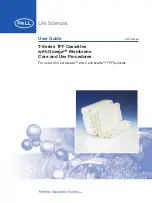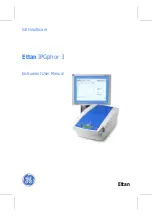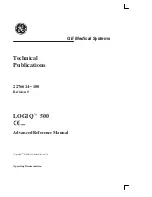
3.1
Circuit Description
3 – 3
threshold and giving the user access to the batteries in such an order
that operation disruptions are minimized.
3.1.2.1
Discharge/Charge circuit
Batteries are discharged with a 50 mA constant current discharge
circuit made of Q205, U205 and current sense resistors R213
/
214.
Power resistors R207–R209 dissipate excess heat during discharge
to keep transistor Q205 within its max. power dissipation limits.
It usually takes only a few minutes to deplete the battery from the
24.2 V useful end voltage to the discharge termination voltage of
23.0 V .
After discharge, the charger current source made, up of Q202, Q203,
U201 and current sense resistor R205 delivers 45 mA current into the
battery. A fully depleted battery of 150 mAh can be safely recharged
in approx. 1
.
4
×
150 mAh
/
45 mA
=
4
.
7
,
hours.
The charge and discharge circuits are essentially current sinks and
sources referenced to the
−
15 V and
+
24 V power supply rails. The
maximum voltage di
ff
erence of 39 V available to a SIM module is
required to charge the NiMH battery stacks, which can have as much
as 21 cells
×
1.5 V
/
cell
=
31.5 V potential accross them while leaving
enough headroom for transistor and sense resistor voltage drops.
3.1.2.2
Thermal considerations
Batteries are chemical storage devices with finite e
ffi
ciency. They
have temperature dependent e
ffi
ciencies and life times. NiMH bat-
teries are best operated at temperatures close to room temperature.
The SIM928 power dissipation and the thermal environment of the
SIM900 Mainframe will lead to a temperature rise of the batteries
which is slightly above room temperature.
Two particular heat
sources will influence the battery temperature most:
1. During battery discharge the module dissipates an additional
1.2 W of heat and temperatures may rise somewhat. This is
perfectly normal and the e
ff
ect can not thermally damage either
electronics or batteries if the external temperature is kept within
the range guaranteed by the data sheet.
2. During charging, NiMH batteries will heat up slightly, espe-
cially towards the end of the charge cycle. This heating is
usually longer than that associated with discharge and will
last several hours. The maximum temperature rise is always
safe and the charger algorithm will cut o
ff
the charging current
before damage to the battery can occur.
SIM928
Isolated Voltage Source





































